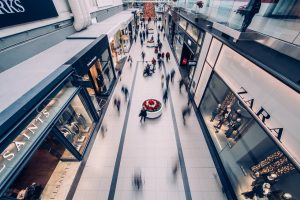When people hear the term visual merchandising they typically become nervous and uneasy. They know it’s a significant retail term, but aren’t sure what it is or how to implement it. It can create doubt about where to begin. If you are artistically challenged and financially deprived, making visual displays can be particularly tough. However, here are five important factors to keep in mind before you start.
These are simple to implement without breaking the bank,and more importantly, they’ll increase your earnings. Powerful visual merchandising has a massive effect on a customer’s experience in your store. Whether you are restoring your retail displays or creating new ones, consider these five approaches to help you to create more impactful and memorable displays for your store and put more cash in your pocket.
- Colour is King
Colour can make or break your visual displays. A retailer might make an erratic display, but if the colours coordinate well, the display can still be a success. Consider using contrasting colours, such as black and white as well as monochromatic colours – both make intriguing and eye-catching displays.
Too often the ability for colour to attract the eye is forgotten. Consider your home, you most likely have a solid grey or brown sofa and rely on throw rugs or cushions for a pop of colour. This is the same principle. Remember: where the eyes go, the feet will follow. So, use colour to capture the eyes of your customers and draw them to your displays.
- Create a focal point
Where can the viewer’s eye focus on your display? Do their eyes move toward a particular spot? Or are they confused about where to look? Create a hotspot – or focal point. Hotspots can increase sales by 229 percent.
Examine your display from the shopper’s point of view: the top, the ground, both sides. Often the focal point is positioned too high for your client to see. Always check your displays to make sure customers can easily see the product.
- Tell a Story

What is in it for customers? Tell them. Use strong, sales-enabling signage to show the benefits of purchasing the product. Present bullet points that tell customers why they want the product or how having that product will improve their life. Bear in mind, you’re not writing an essay but instead a headline, strong bullet points, and the price. By telling a story, you help the shopper better understand the product and enable the purchasing decision.
For example, lifestyle graphics are known to speak for themselves – if you’re trying to sell a gorgeous pair of strappy heels then put them on display with a poster of a woman wearing the same heels as she enjoys drinks with friends – a picture speaks a thousand words.
- Expose clients to the maximum quantity of merchandise
A well-designed, impactful display exposes the consumer to as much product as possible while preventing a cluttered mess. The more they see, the more they purchase.
Consider using a round store layout, which many retailers use. It is powerful because it exposes clients to more merchandise than conventional aisles. Where your shop does use aisles, put a glass showcase in the centre so shoppers must stop and examine the products. Have as many displays as possible, and present as much product as possible. But keep display showcases sharp and clean, and make sure aisles are spacious and barrier-free to prevent deterring customers from goods.
- Use empty space sensibly
There is space in most retail stores that is not utilised. It is the part between the displayed merchandise and the ceiling. If this space in your store is empty, you might want to consider using it. You can use this space for a range of things, including signage that provides information about brands or products.
You might also exhibit lifestyle images that help clients form connections with your products. For instance, a furniture shop could display a picture of a family cosied up on a sofa, emitting those warm, fuzzy feelings that shoppers want to replicate. A jewellery store could exhibit a woman in rose gold heels at a fine dining restaurant, wearing a diamond ring, making an association between the store’s jewellery and a lavish lifestyle.
Visual merchandising is multifaceted, and retailers can choose from countless ideas when designing displays – the ones listed here are highly effective and memorable and promise to drive sales.
